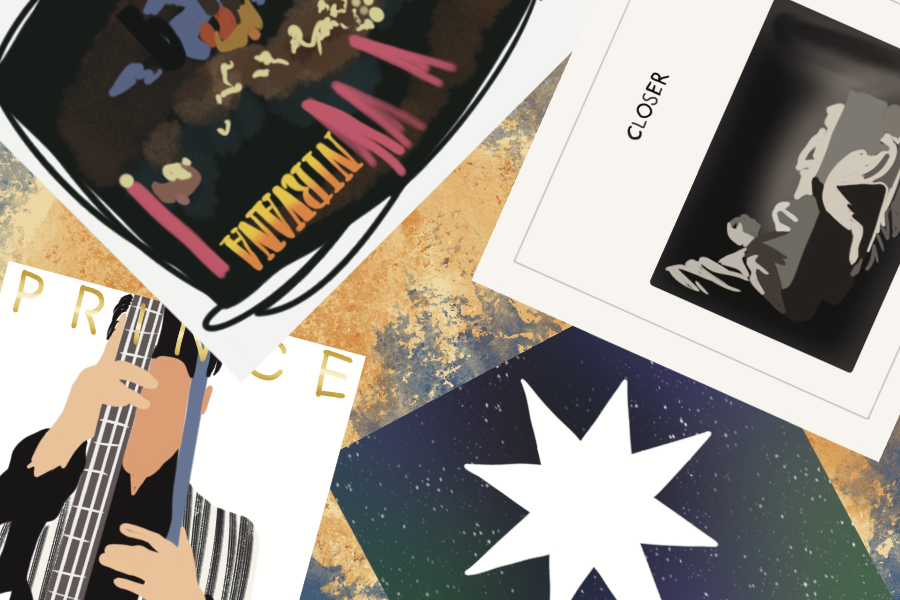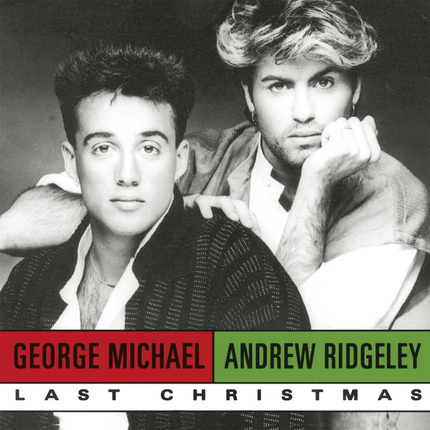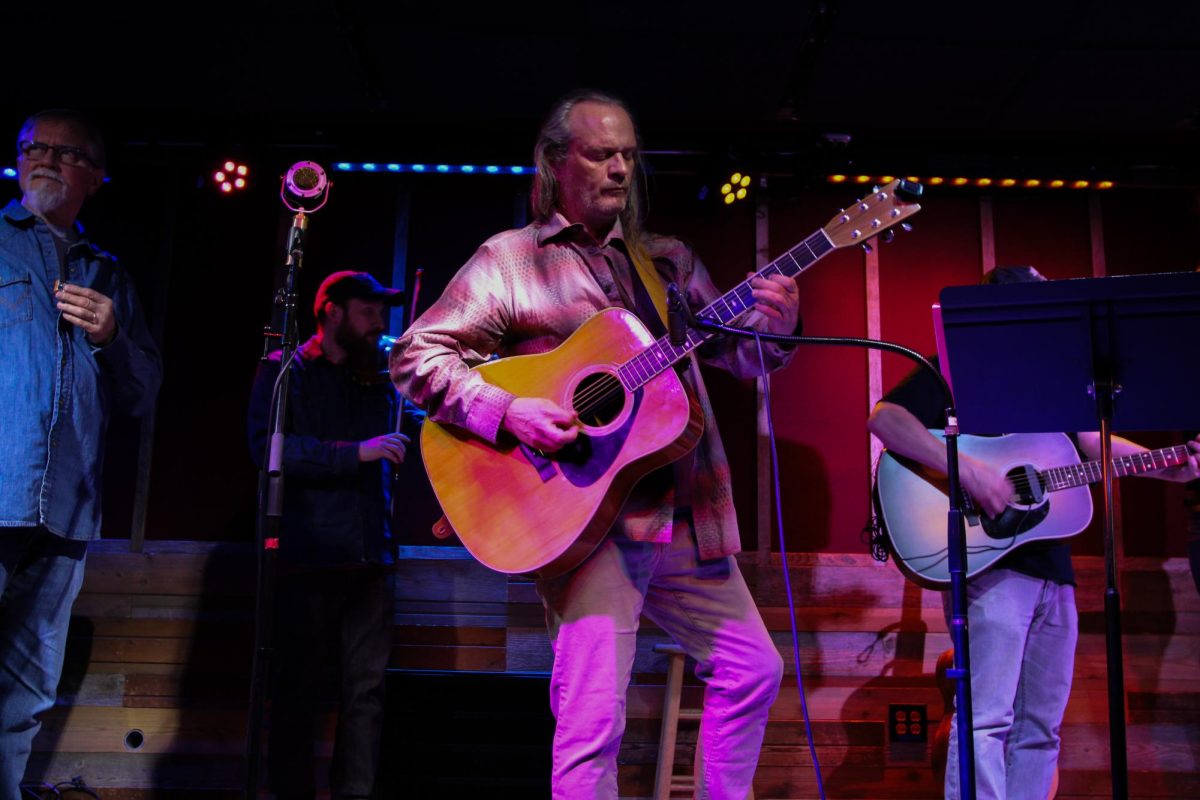On Nov. 2, The Beatles released a new single, “Now and Then.” Despite being released to great fanfare and acclaim, there is, of course, no hope for a reunion, as two of the original four members of the iconic pop-rock band passed away in 1980 and 2001, respectively.
This is just the latest in a large catalog of posthumously released music projects dating back decades.
Projects like the aptly named “Life After Death,” a posthumous album that rap icon The Notorious B.I.G. released in 1997, and more recently “Xscape,” a posthumous album released in 2014 following Michael Jackson’s death, represent trends in the music industry, music fandom and music discourse.
According to a 2014 study, “Death-Related Publicity as Informational Advertising: Evidence from the Music Industry,” an artist’s album sales increase by an average of 54.1% after their death — and the recent passing of pop-rock icon Jimmy Buffet is no outlier.
Forbes found that Buffet’s sales experienced a surge of over 7,000% in the first week after the announcement of his death.
Get The Daily Illini in your inbox!
David Bowie, Janis Joplin, Tupac and other big artists — or rather, their label executives — all experienced an influx of profits from posthumous sales.
Contracts between artists and record labels wield a significant impact on how an artist’s discography is used after their death.
Jeff Brandt is the owner of Exile on Main Street, a record store in Champaign. He said that many of these contracts can be less than ideal.
“There’s been a billion poorly, poorly written and signed recording contracts where you lose control of your music,” Brandt said. “It happens way less now, but it still happens. The artist used to never have any power.”
John Paul Meyers, assistant professor in LAS and ethnomusicologist, said music labels often strive for a “long-term profitable relationship” with the artists’ recordings — which means that after artists pass away, the labels strategically plan releases to maximize profit.
In some instances, like with Jimi Hendrix’s family and their management of Experience Hendrix LLC, the artist’s relatives are given control over the artist’s legacy after their death.
Meyers said that because of this, music labels want a good relationship with the artists’ families.
“(The labels) want Hendrix’s family to endorse an album, do interviews saying why this album is good and why you should buy it and be supportive,” Meyers said.
Brandt and Meyers both suggested that modern artists are more vigilant about maintaining their autonomy, leaving behind the days of “napkin-signed deals,” as Brandt put it.
“Most people aren’t stupid enough to sign their creativity, talents and recorded things away to the Wizard of Oz — the guy behind the curtain,” Brandt said. “People know better.”
Modern artists like Tyler, the Creator and Anderson .Paak have made strong statements on posthumous music, anticipating industry forces will attempt to release their music after their deaths.
In 2021, .Paak posted a photo on Instagram that featured a section of his will tattooed onto his arm.
“When I’m gone please don’t release any posthumous albums or songs with my name attached,” the tattoo read. “Those were just demos and never intended to be heard by the public.”
In 2023, Tyler, the Creator performed some of his unreleased material at a concert in Los Angeles.
“Some of these (songs) are so good I can’t just let them sit on my hard drive,” Tyler said. “Because I have in my will that if I die, they can’t put no f—— (posthumous) album out. That’s f—— gross, like, half-ass ideas and some random feature on it from some n—- I didn’t fuck with. Like, no.”
Interestingly, Ed Sheeran came out with the opposite view recently, announcing that he has been working on a posthumous album.
Overall, the distinction between artist autonomy in Hendrix versus Sheeran’s days lies in the ability of the artist to decide whether their music will be released posthumously, and how.
However, Bob Diener, owner of the record store Record Swap in Champaign, said the commercial greed of record labels is intact and growing.
“I understand the motive, because money rules — that’s America, that’s a lot of places,” Diener said. “In the old days, there were people that were greedy, it just seems that there’s a lot more now.”
While the music industry’s response to an artist’s death may operate on the logistics of numbers and graphs, consumer behavior is generally borne out of a natural combination of curiosity and nostalgia, from casual listeners to diehard fans.
Some of those diehard fans join fandoms dedicated specifically to said artists. These fandoms can encourage parasocial relationships, a phenomenon in which a fan or consumer puts a great deal of social and emotional investment in an artist. This artist typically does not reciprocate this emotional investment and is often unaware of the fan’s existence.
The unique nuances of parasocial relationships make the dynamic between artist and fan a delicate one. The sudden death of an artist can exacerbate this dynamic, according to “Parasocial Relationships with Musicians,” an article published in The Journal of Social Media in Society.
“If you have all these vinyl records and stuff and all these box sets, you feel a sense of ownership and relationship to this person,” Meyers said. “It’s definitely about forming a relationship … If you can hear more recordings from this person that you haven’t heard before, you can deepen and further that relationship.”
Physical releases provide a tangible connection between the fan and the artist; both Brandt and Diener, who worked in record stores amid the passing of stars like John Lennon and Kurt Cobain, said they saw an influx of people into stores following major deaths.
Brandt said his wholesalers are instantly out of all their stock for an artist after that artist passes away.
“Everything disappears for a week or several months,” Brandt said.
“It’s close to being almost disrespectful to me,” Diener said regarding those who flock to record stores after an artist’s death. “I just don’t know why somebody runs out to the record store to buy music from a dead person at that time. Why didn’t they buy it before if they were a true fan?”
In the streaming era, the expectation is that an artist is on demand to perform for you at all times; their passing brings fans’ relationships with the artist into question. Instead of simply being a vehicle for entertainment, the death of an artist makes them three-dimensional, mortal people, challenging the entitlement of consumers. Posthumous online releases serve as a way to meet that expectation of availability despite the possibly morbid undertones.
“This kind of post-mortem puppetry (is referred to as) ‘zombification,’ a phenomenon wherein public figures are never allowed to rest in peace, and instead are doomed to stay in performance mode forever,” said Kwaku Gyasi in a Varsity article discussing posthumous albums.
Though not necessarily a conscious behavior, the emotional ties formed through a parasocial relationship drive a great deal of interest in posthumous music releases.
“People are like, ‘Whatever we can get from this guy, we want,’” Meyers said, describing the reception to John Coltrane’s posthumous discography.
Meyers said one of Coltrane’s posthumous albums, “A Love Supreme: Live in Seattle,” was released to a large fanfare.
“I knew about it for weeks and maybe even months before it was gonna come out,” Meyers said. “NPR did a special thing, their jazz program hosted a live listening session to the album a week or a day before it was released. It was a special thing.”
According to Brandt, fans of artists who have passed “would be happy with the scraps of unfinished stuff.”
Meyers said the motivations around the production and consumption of posthumous music are multifaceted. Posthumous music may present an opportunity for industry exploitation, but it can also help revive an artist’s work and continue the legacy of iconic musicians such as Coltrane.
Local and independent record stores are uniquely impacted by posthumous music releases. The owners and employees of these storefronts are positioned as the middleman between powerful labels who control the distribution of music and passionate fans who want to listen to it. In other words, record store owners are positioned between the corporate greed of record labels and the morbid curiosity of music fans.
“I thought it was my duty to carry that stuff,” Diener said of posthumous releases in the past. “You always want to make your customers happy. So when they come in wanting something, you kind of want to have it.”
However, many independent record store owners are not oblivious to the ulterior motives of large labels or independent sellers that seek to profit from an artist’s legacy, rather than celebrate or preserve it.
“A lot of it is driven by the greedy nature of capitalism and the music industry in general, which is very, very cutthroat,” Brandt said. “The ethics of it, it’s literally a case-by-case basis whether it’s for good reasons or bad reasons.”
Both Diener and Brandt acknowledged that major labels will sometimes raise the prices of an artist’s work after their death — all part of “supply and demand,” according to Diener. However, they also expressed that private sellers can have their own reasons for doing so.
“I had to because I needed to pay some bills pretty quickly,” Diener said, sharing his experience raising the prices of posthumous music in his store. “I don’t really have problems with that unless you buy them and the suggested list price is $29.99 but because he died, you raise it to $59.99. Yeah, that’s wrong.”
Whereas labels may manipulate and exploit artists through unfair contracts and a tight grip on the industry following the rise of CDs in the 1990s, independent record store owners are regular small business owners trying to keep the lights on. Individuals like Brant and Diener can be put in a morally ambiguous situation wherein they have an obligation to please fans, respect the artist’s legacy and run a business.
Despite having both consumer demand and corporate interest, posthumous music releases are not without critics.
Meyers specifically cited an instance wherein Kenny G overdubbed his saxophone onto Louis Armstrong’s “What a Wonderful World” in 1999.
“They didn’t ask the Armstrong family,” Meyers said about the decision making behind the controversial song. “I highly doubt they asked jazz scholars in particular, and they didn’t ask jazz musicians, ‘Do we think this is a good idea?’ No doubt they probably just did it for the money.”
A prominent, more generally well-received instance is perhaps the predecessor to “Now and Then” — that being The Beatles’ Anthology project.
The project included “Free as a Bird” and “Real Love,” both of which were originally recorded decades before their release as demos recorded by Lennon. The tracks were later combined with the vocals of Paul McCartney, George Harrison and Ringo Starr to create the final products.
“The John vocals in the first one, ‘Free as a Bird,’ totally sound like he’s a ghost, but it’s kind of awesome,” Brandt said.
With recent innovations in artificial intelligence and other technologies that could aid music production, the possibilities for posthumous music are even larger. “Now and Then,” for example, used artificial intelligence to refine John Lennon’s voice from an old demo tape.
The song’s usage of AI to elevate, not replicate, Lennon’s voice is relatively tame compared to other current examples.
A number of covers featuring artist-genre crossovers, like an AI YouTube cover of Elvis, Kurt Cobain, Freddie Mercury, Michael Jackson, Chester Bennington, Paul McCartney and David Bowie singing “Life is a Highway” by Rascal Flatts, have garnered millions of views and listens across social media and streaming platforms.
This year, “Heart on My Sleeve,” written and produced by TikTok user ghostwriter977 and “sung” by Drake and The Weeknd, was a viral instance of original lyrics and instrumentals paired with AI-generated vocals.
The song was later taken down from streaming services on the basis of a copyright claim from Universal Music Group — an industry giant that houses names like Taylor Swift, U2, Bad Bunny and Kendrick Lamar — but not before it sparked a range of reactions from the media, public and music industry.
“Now and Then” and “Heart on My Sleeve” represent two ends of a spectrum of AI and other technologies’ utility in music — one that is changing unchecked with a rapid pace of innovation.
AI intervention in posthumous music may highlight a lack of foresight in the current regulations around legal and creative autonomy in the music industry.
Brandt shared disdain for the usage of AI in music.
“I know damn well I’m gonna like it, but it kind of makes me sick,” he said, in reference to “Now and Then.” “I was like, ‘Paul, Ringo, like, come on … you don’t need it. You’re the f—— Beatles.’”
Brandt voiced the concern that normalizing the use of AI in music, posthumous or not, might make the already-high barrier of entry to the industry even taller.
“Once you open Pandora’s box … it will become more difficult for regular people to become famous and make money off of making music,” Brandt said. “I don’t think there’s any way that down the road, an aging artist or somebody that’s falling off of popularity isn’t gonna use AI to help.”
Brandt also considered the existence of AI clauses in entertainment contracts that will dictate whether an artist’s voice can be used after their death and how.
Meyers does not believe posthumous music made with AI could garner a loyal audience beyond its initial novelty.
“I don’t know why fans would want that when they could either listen to original recordings or new rappers,” Meyers said. “I don’t see an audience for that stuff. I don’t think people really want it.”
“With regard to posthumous music, there’s infinite opportunity now,” Brandt said. “The sky is the limit in contracts.”








